The starting point for my paintings is always some piece of observation. Sometimes it is recorded photographically, on other occasions by drawing directly in the sketch book. Whatever the starting point I always progress through a series of works on paper exploring the mark and colour.
The works all use a similar format and I have been making them since 1980.Each piece is built around a 20 inch size square on 24inch wide paper. I hesitate to call them paintings but such is the amount of paint, both acrylic and oil, that I also hesitate to call them drawings. What’s in a name, why does it matter? These fall somewhere between the free exploration using colour pencils in my sketchbook and the very formalised approach I have to the ritual of painting, sitting in neither camp.
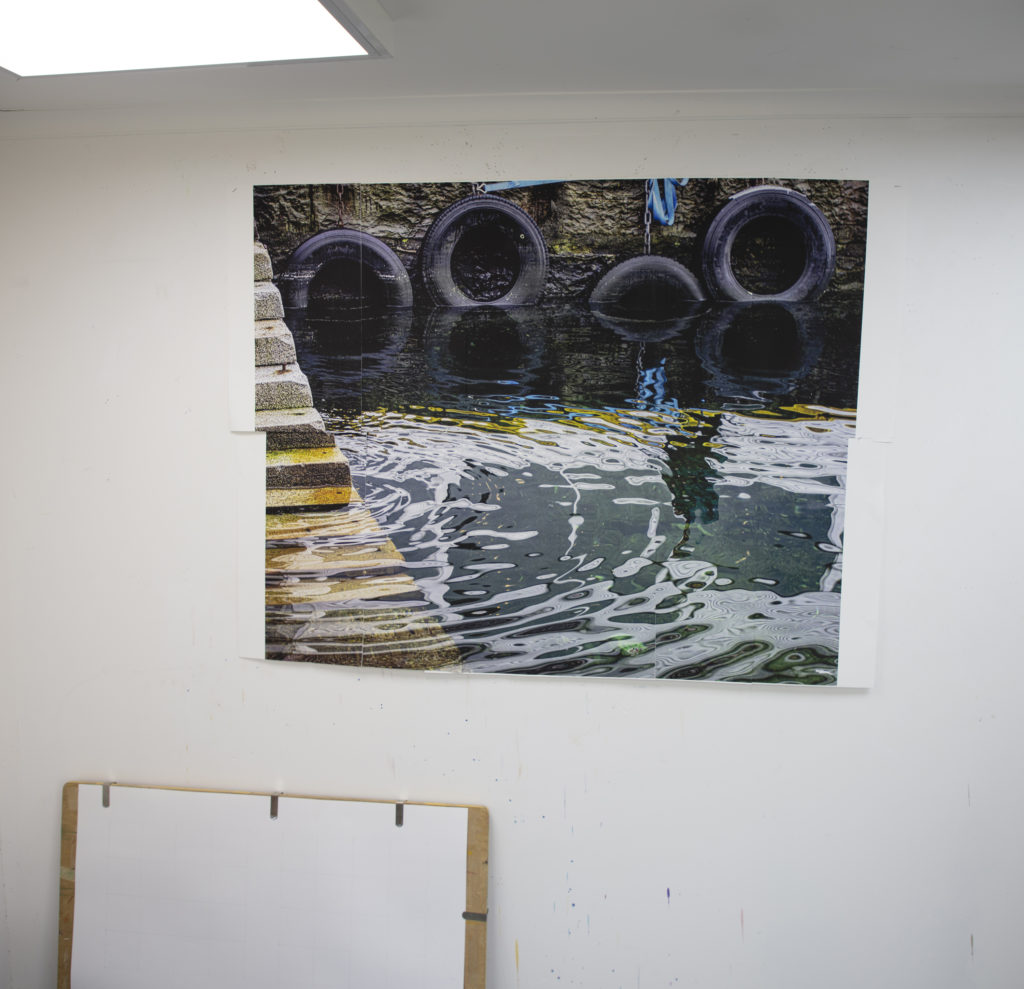
Bergen harbour – Roughly 4 feet by 3 feet this image will form the basis of paintings to come once I sort out in my mind what I want to extract from it
Sometimes the work itself is made directly from observation but more often a series of photographic images are printed out large scale and pinned up on the studio wall, much as in the paintings of the honeysuckle now in US collections. In that instance the image was A0 size, whilst currently a future project sits on the studio wall to be chewed over in my subconscious mind. From these I start looking at the colour.
Sometimes I select an area of detail to enlarge – my cameras chosen because of the very large sensor enabling small section to be enlarged without going grainy or pixelating. This can result in paintings like the ‘Poppy’ series where they worked around the arrangement of stamen in the centre. Before committing to canvas there can be as many as a dozen of the paperworks just looking at the interplay between the mark and the colour, frequently involving layers of colour . These are often built with acrylics as the bottom layer and then oils laid over the top – pastels and oil bars both used. These can then be washed with turps, scratched through (the cat wonders where his wire brush has gone…) allowing the bottom colour to show, often clashing or contrasting with the upper layer of colour it shows through.
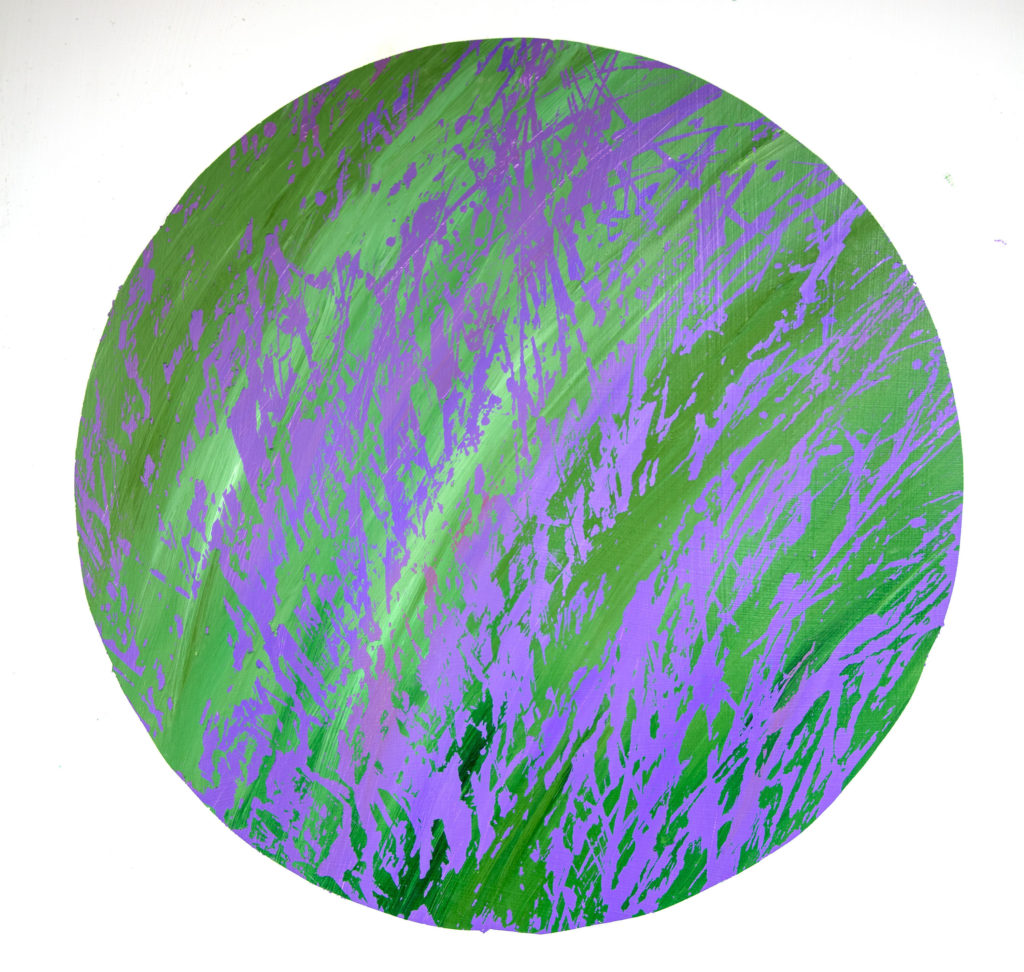
Lavender – this is the exception and is just acrylic paint. approx. 20 inch diameter circle. The circle is an unstable shape always threatening to roll away… All paper is primed with three coats of gesso
I use the square in part because if is the most stable of regular geometric shapes, in part because of its links with the grid I have written about in the past, and in part because of its links back to the Bauhaus and Joseph Albers. Albers used the square to explore the difference between the same colour as manufactured by different paint makers and varied the width of the square within the square because it showed the interaction of colours. I show the interaction by a more pointillist technique and use the mark made in laying down the colour to emphasis the gesture.
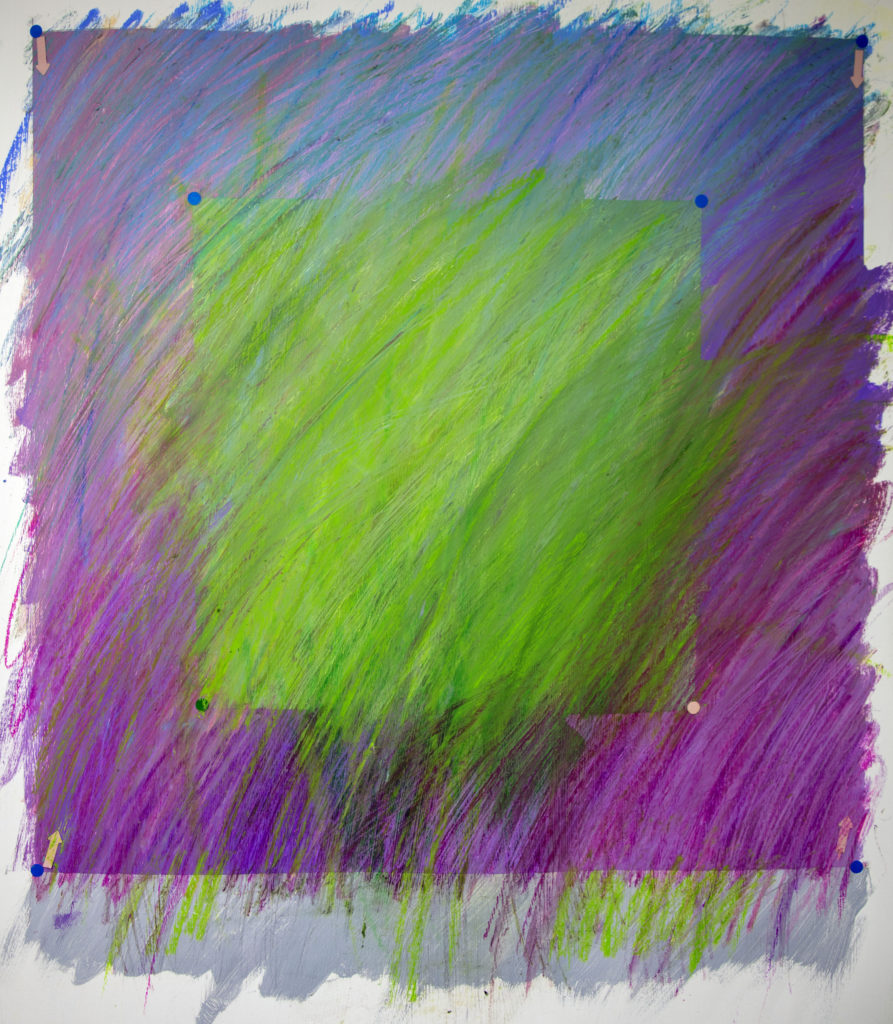
Lavender #3 Oil pastel/oil bar on acrylic with added graphic pieces, 20inches square All paper is primed with three coats of gesso
Colour and the gesture, two basics for every painter. I use both to try to destabilise the square visually. Colour describes spatial and emotional values and can be used to produce a surface that ‘moves’ visually, whilst colour advances and recedes so can be seen breaking through other colours, helped by tonality (follow the above link for experimental verification of this). The gesture reinforces this by creating the illusion of layers, the speed and direction of the mark pulling the eye one way on the surface whilst the colour pulls it another. Tonality also shifts the surface against other surfaces and the eye will read surface not as object but as spatial position.
All these parameters then come in to play on the canvas where I introduce a third set of parameters – visual recognition. By using a drawn image and fragmenting its colour from the use of the grids then I introduce visual ambiguities of depth, surface, movement, and emotion. The recognition of an images adds further puzzlement for the viewer ensuring that contemplation brings more reward. This is about a painting as an object of contemplation, almost reverential in its ability to reveal a different truth about reality.
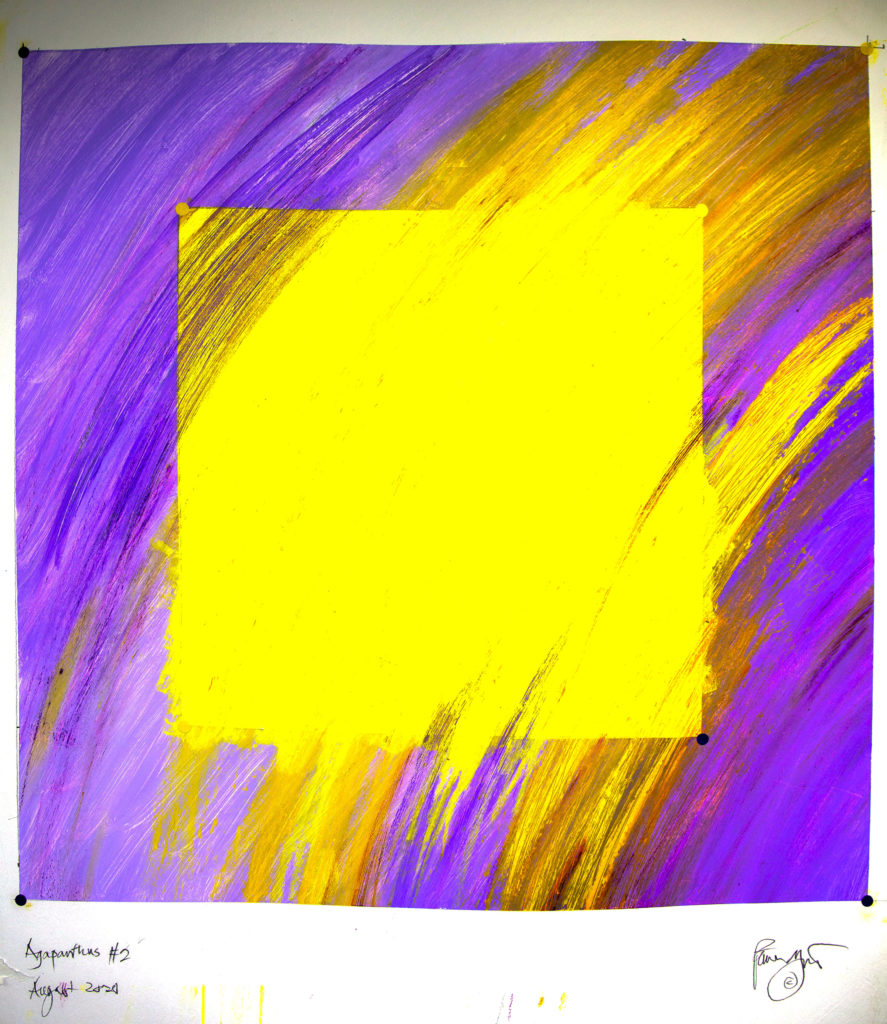
Agapanthus #2 Oil pastel and oil bar on acrylic base. 20inches square All paper is primed with three coats of gesso
So where does my timidity come in? The freedom I enjoy in the experimentation on paper seems to become overwhelmed when I move onto canvas. The rituals involved in stretching, priming and preparing canvas to work on, allied to the scale of the square on the canvas – decision of size (yes, size does matter) the nature of a painting as an icon inherent in its position as an object of almost reverential contemplation, all creates a sense of the importance of the painting that I can’t allow to interfere with the mythmaking on paper.
Its not as if the canvas becomes overly important once done. Yes I hate it when I learn they have been destroyed (as by careless Arts Council apparatchiks or uncaring custodians in colleges) but otherwise once they are hanging somewhere else I move on. It is the act of making a painting that is becoming the constraint. I need some of the impulsiveness of a Jasper Johns and allow the randomness of the events that happen on paper to appear in the making of the paintings.
This brings me up against the problem of scale. I like painting large scale works but unless I am to destroy each one after creation what happens to them? Storing 9 foot paintings is impossible and selling them is not a way forward – my experience is that buyers struggle with anything larger the 3 feet in any one dimension and even at that scale people willing to be that bold are few in number. It also costs in paint, canvas, and stretchers…
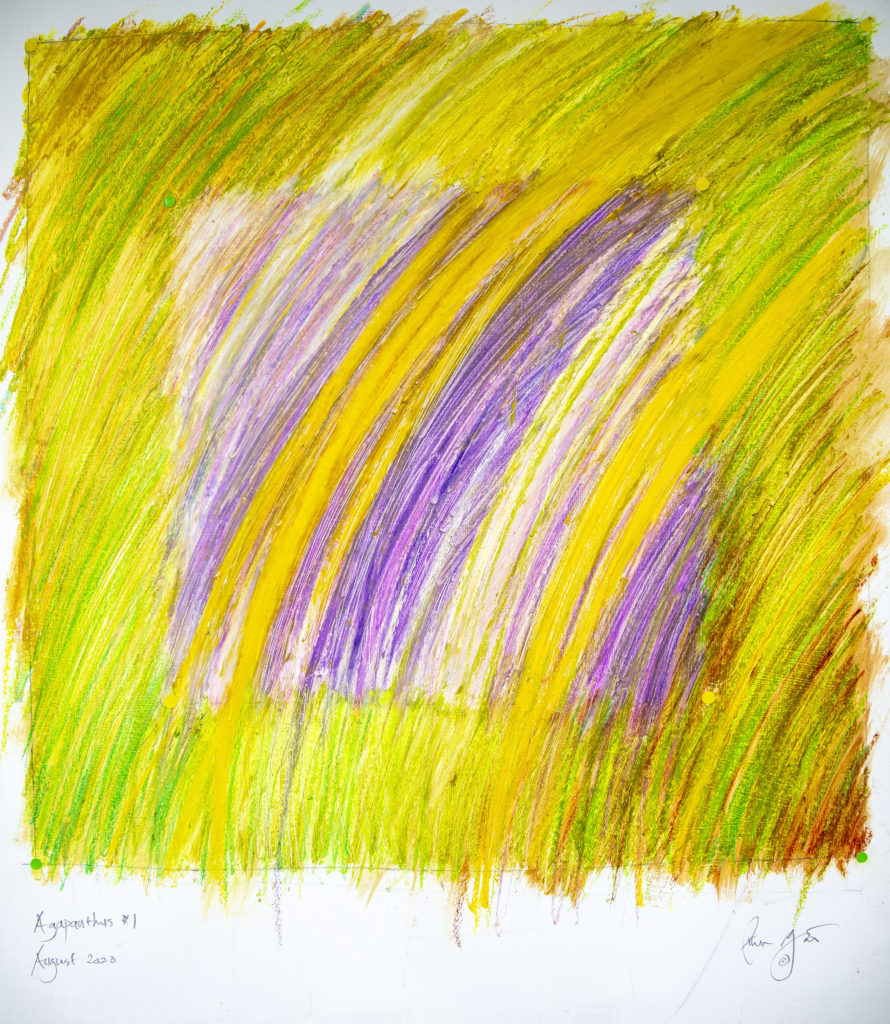
Agapanthus #1 oil pastel and oil bars on paper. 20 inches square. All paper is primed with three coats of gesso
The Morley mural was a delight to do at 30 feet high by ten feet across, looks wonderful even though a lift shaft was built in front of it. The square size, as I remember it, was ten inches, much closer to the works on paper. So, if anyone would like to commission ….
Meanwhile paintings will be ‘domestic’ in scale, and I will have to adjust my techniques and urges, and yes I have been told that before in another context…

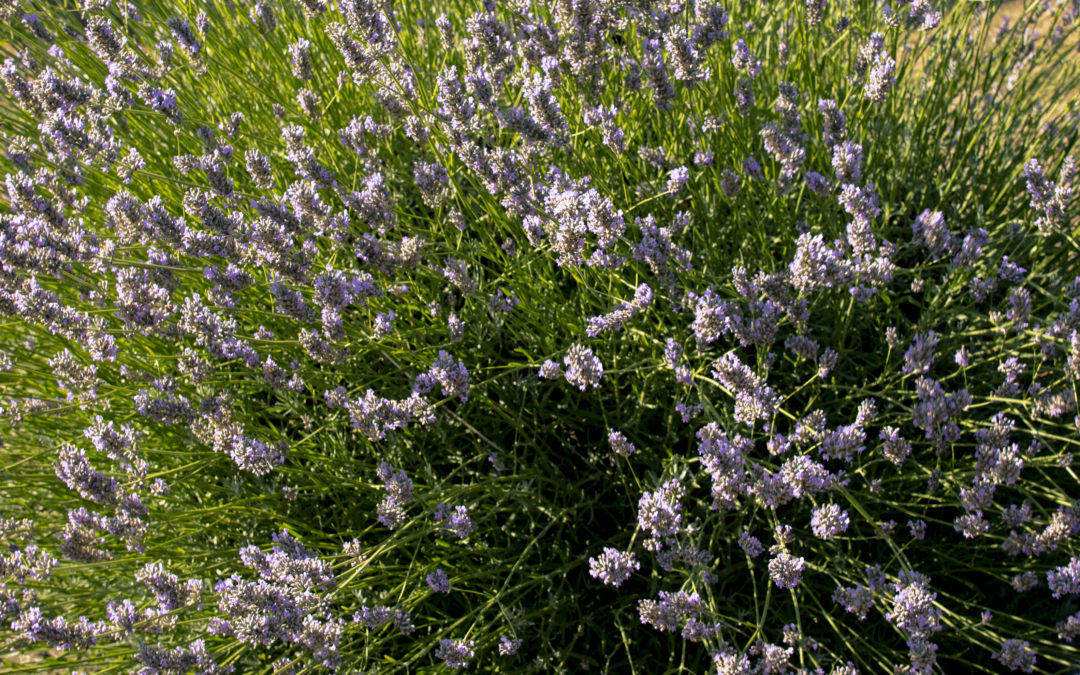
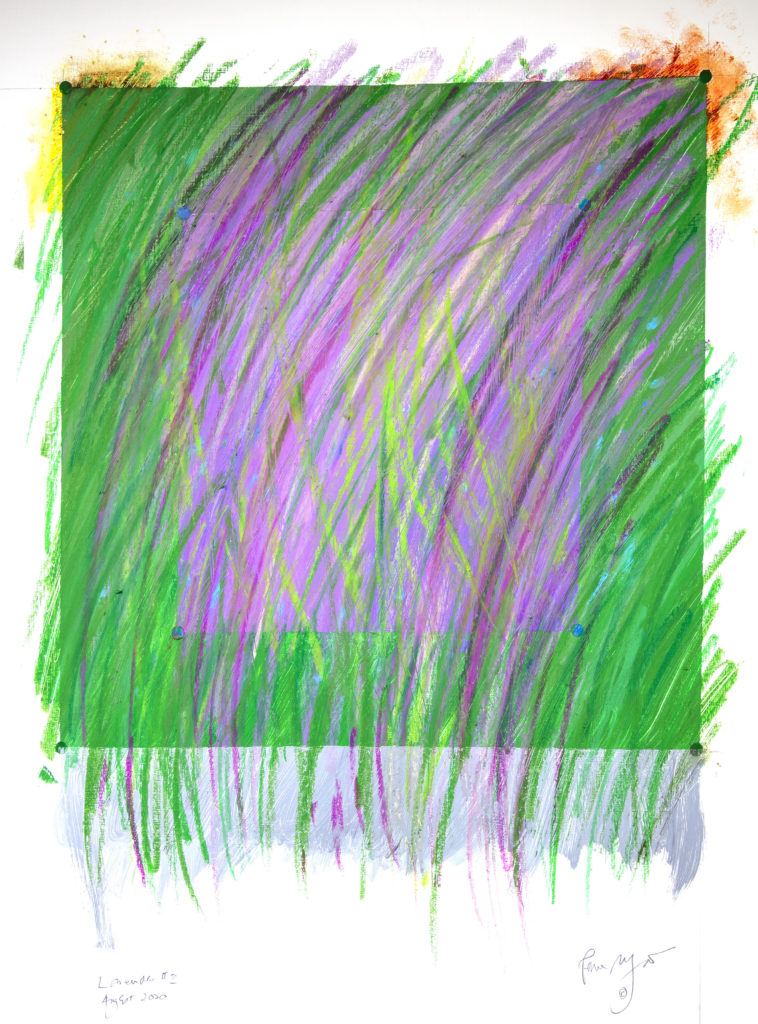
I understand and experience a similar tension between the energy and feeling of exploration in the initial study and then the many iterations that seem to be needed to reach a painting that has ‘settled’. I’ve recently been thinking about a comment a non-arty friend made about an on-the-spot sketch, that it was an authentic, immediate, lively and interesting piece of work – why would I want to do anything else with it? Why copy it and worry at it to make something with less immediacy? Is every step overthinking, overanalysing? Why can’t all our knowledge and technique be involved in making a work that starts wherever it starts? Is the use of sketches and studies a way of dooming ourselves to making overworked, over tidied and overthought paintings? Are we starting our work with the wrong materials and techniques so that they can’t produce the finished work we want to be exhibiting? How annoying to think like this!